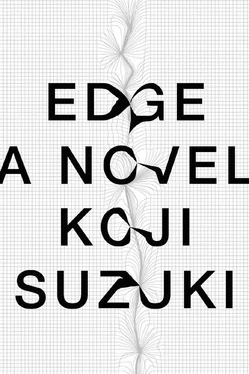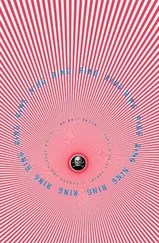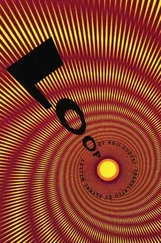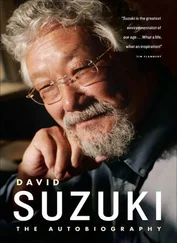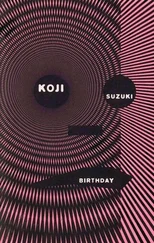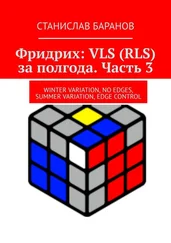More and more, it seemed to Saeko as if the Fujimura family had simply vanished into thin air.
2
Saeko turned off the TV, crawled out of bed, and opened her planner to check the time of her meeting today with the TV station. One p.m., in a meeting room at the station. There was still plenty of time.
She had breakfast and took a leisurely shower. As she stepped into a tight skirt and zipped it up — she hadn’t worn one of these in a while — she felt her body tense slightly in anticipation. This was the first time Saeko had ever been involved in a television show. She relished the idea of undertaking a job far more grueling than anything she’d ever done. She wanted to lose herself in work that would exhaust her mentally and physically, without sacrificing pride or self-respect.
She knew that by pursuing novel experiences she could maintain a certain degree of tension in her life that would help her forget the pain. At the same time, she had a tendency to imagine failure around every corner and was often afraid to take the initiative. Instead, she found herself always passively going with the flow, letting herself get caught up in whatever work happened to come her way.
Even though her father had advised her to do just the opposite.
Whenever Saeko struggled with her schoolwork, her father never simply gave her the answers. Instead, he offered subtle hints, guiding Saeko to find the answers on her own.
When Saeko was in sixth grade, her science teacher assigned a difficult problem as homework, and the answer was nowhere to be found in her books. It required a spatial understanding of astronomical bodies to work out the answer, and the teacher hadn’t expected any of the students to actually solve it. He had simply intended for the assignment to stimulate deep inquiry in the students by way of forcing them to think about a difficult problem.
Saeko had thought about the problem to the best of her abilities, but the answer was beyond her. Eventually, she consulted her father.
Her father began by drawing an illustration and explaining how the planets orbited the sun. With gestures and humor, he offered an animated account of the resulting interplay of light and darkness, the waxing and waning of the moon, lunar and solar eclipses, the relationship between the positions of Venus and Mars, the directionality and volume of light received from the sun, and so forth. By helping Saeko visualize the relationships between the sun, the planets, and the moon and how we perceive them from the Earth’s surface, he gave her an important hint as to how to solve the difficult assignment.
“Close your eyes and picture it …”
Her father’s gentle guidance worked like a charm. Saeko thought long and hard, and suddenly found herself able to visualize the planets orbiting the sun. The light that radiated out from the Sun in every direction and the resulting shadows made the Moon and Venus and Mars sparkle all the more fantastically in her imagination. She grasped the planets’ orbits perfectly and absorbed with ease the principles behind the phenomena. It was the moment that gave rise to Saeko’s passion for science and her ability to close her eyes at any time and witness the incredible astronomical spectacle wrought by the play of light on the objects of the solar system.
When Saeko’s father disappeared during Saeko’s second year of high school, her ability to visualize celestial motion also departed. When she did manage to conjure up lifeless, mineral objects revolving in a dark vacuum, there was no beauty in the image. At the same time, she lost interest in physics, mathematics, the ability to grasp spatial relationships — and the courage to explore new territory.
Saeko’s thoughts shifted back to the present. The memory of receiving hints from her father had brought to mind his postcard.
Where did I put it? she wondered. With the sudden realization that she’d forgotten something important for many years, her movements quickened. She pulled open drawers all over the apartment, hunting for the lost item.
She finally found the postcard in the file of records pertaining to her father’s disappearance. The card’s edges were tattered and frayed; after it had arrived, she had carried it with her at all times, touching it frequently and staring at it with intense longing. She had probably tucked it away in the file a few years before getting married. Now, more than ten years had passed since she’d last handled it.
It was a run-of-the-mill picture postcard, but the postmark was somewhat unusual. It had been sent from La Paz, the capital of Bolivia. The picture was of the ruins of Tiwanaku, which were not far from La Paz.
On the back of the postcard was Saeko’s father’s familiar handwriting. His letters and postcards were always written horizontally in Western style since he made frequent use of numbers and English words in his correspondence.
The postcard was dated August 19, 1994, and the postmark bore the same date. He must have written it the morning of the nineteenth and posted it just after checking out of his hotel. After leaving the hotel he had flown from the El Alto International Airport in La Paz to Houston, and the next day to Narita. He’d arrived at Narita on August 21st, checked in at a hotel near the airport, and called Saeko to let her know that he would be heading for Shikoku the next day.
She never heard from him again.
The postcard had arrived on August 25th, when Saeko’s father’s disappearance had already robbed her of all vitality, leaving her dazed and lost. Even though she knew it had been written a week earlier, when the postcard arrived it convinced Saeko somehow that she would see her father again one day. It had given her the strength to go on living.
How are you, Saeko? I’m headed back to Narita now by way of Houston. Coming here has led me to realize a number of things .
Life, eyes, black holes, language …
The extinction of the dinosaurs, the extinction of the Neanderthals …
Life and death. Opposing concepts. In terms of information theory, the mechanisms of life and death are the same. The interplay of light. The interplay with the brain and consciousness maintains the structure of the cosmos. The important thing is the network of relationships. If these relationships break down, “the sun will not rise tomorrow.”
August 19, 1994, La Paz
When the 17-year-old Saeko had received this postcard, she had no clue what her father was driving at. In fact, it wasn’t until she became a philosophy major in college that she recognized that “the sun may not rise tomorrow” was a reference to Wittgenstein’s Tractatus Logico-Philosophicus . Saeko’s father always put his references in quotation marks to avoid confusion. The full quotation from Wittgenstein was, “It is a hypothesis that the sun will rise tomorrow: and this means that we do not know whether it will rise.”
The Internet and e-mail were not yet ubiquitous when her father had written the postcard, and Saeko suspected that he had intended it to serve both as a message to his daughter and a memo to himself.
But what on earth had he meant? Saeko had been so preoccupied by his disappearance that she had neglected to devote herself to deciphering the postcard’s message. There was something ominous in the mention of extinction and a denial of the future in that clause “the sun will not rise tomorrow.”
Was it pure coincidence that Saeko had remembered the postcard her father had written her eighteen years ago on the same morning she was scheduled to attend a meeting at a television station, on the strength of an article she had written about a missing persons case? Her father had always counseled her to take flashes of inspiration seriously.
Читать дальше
